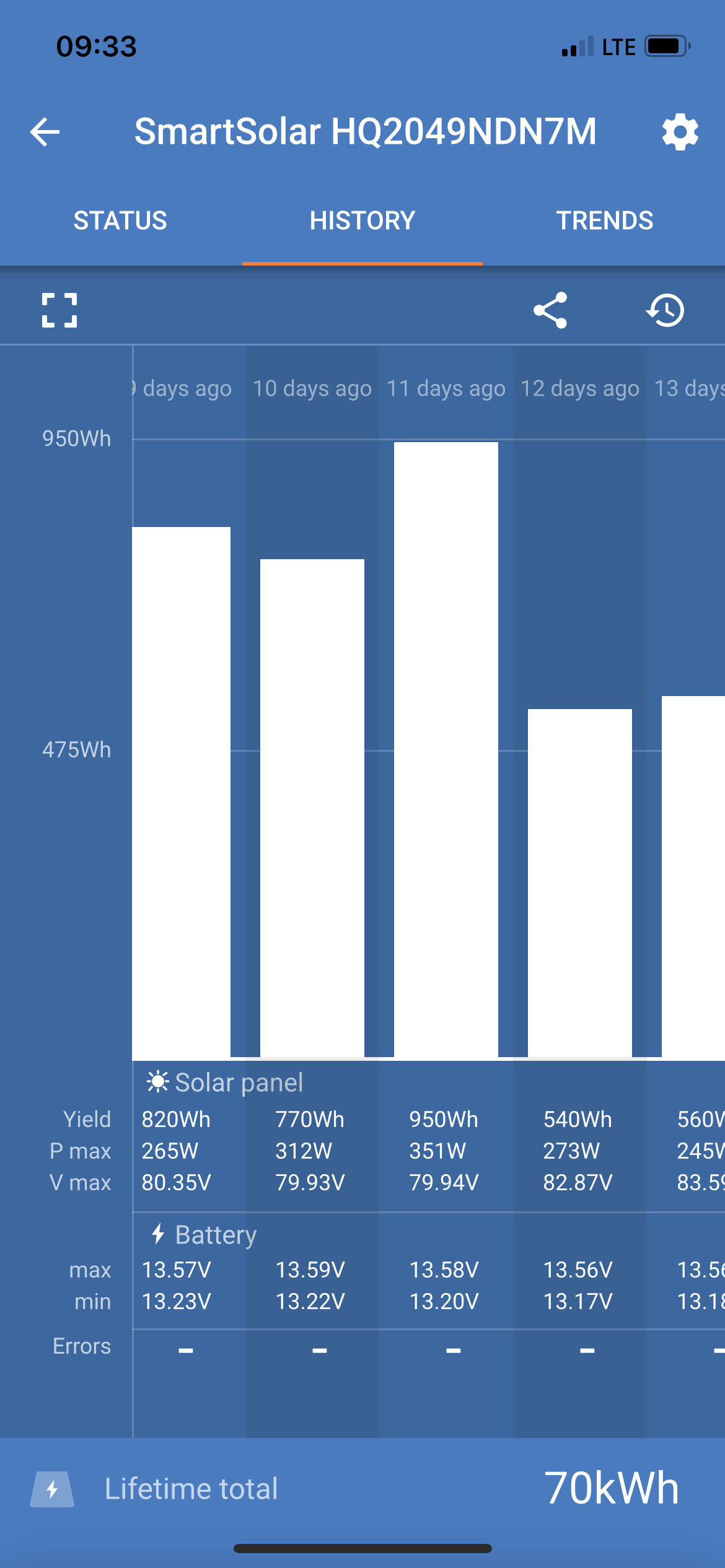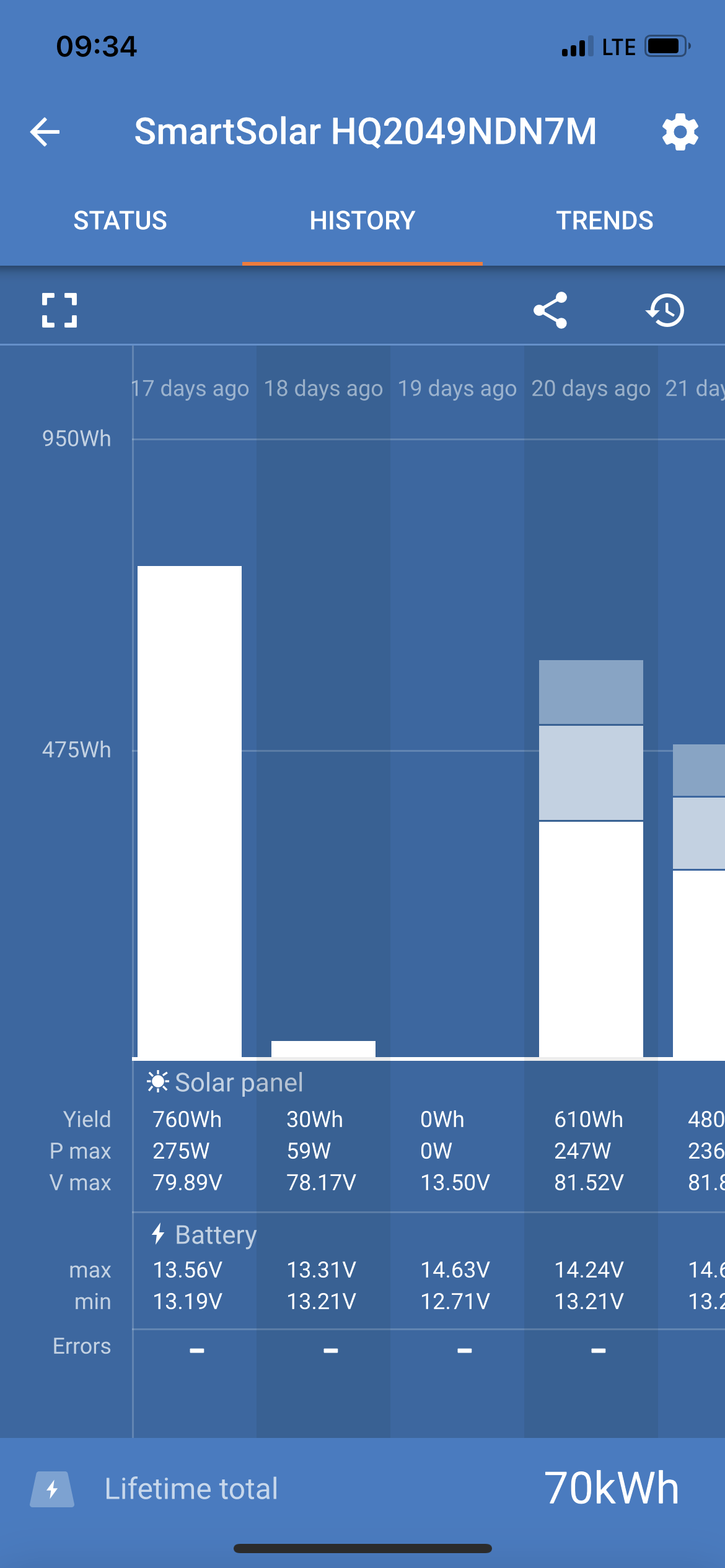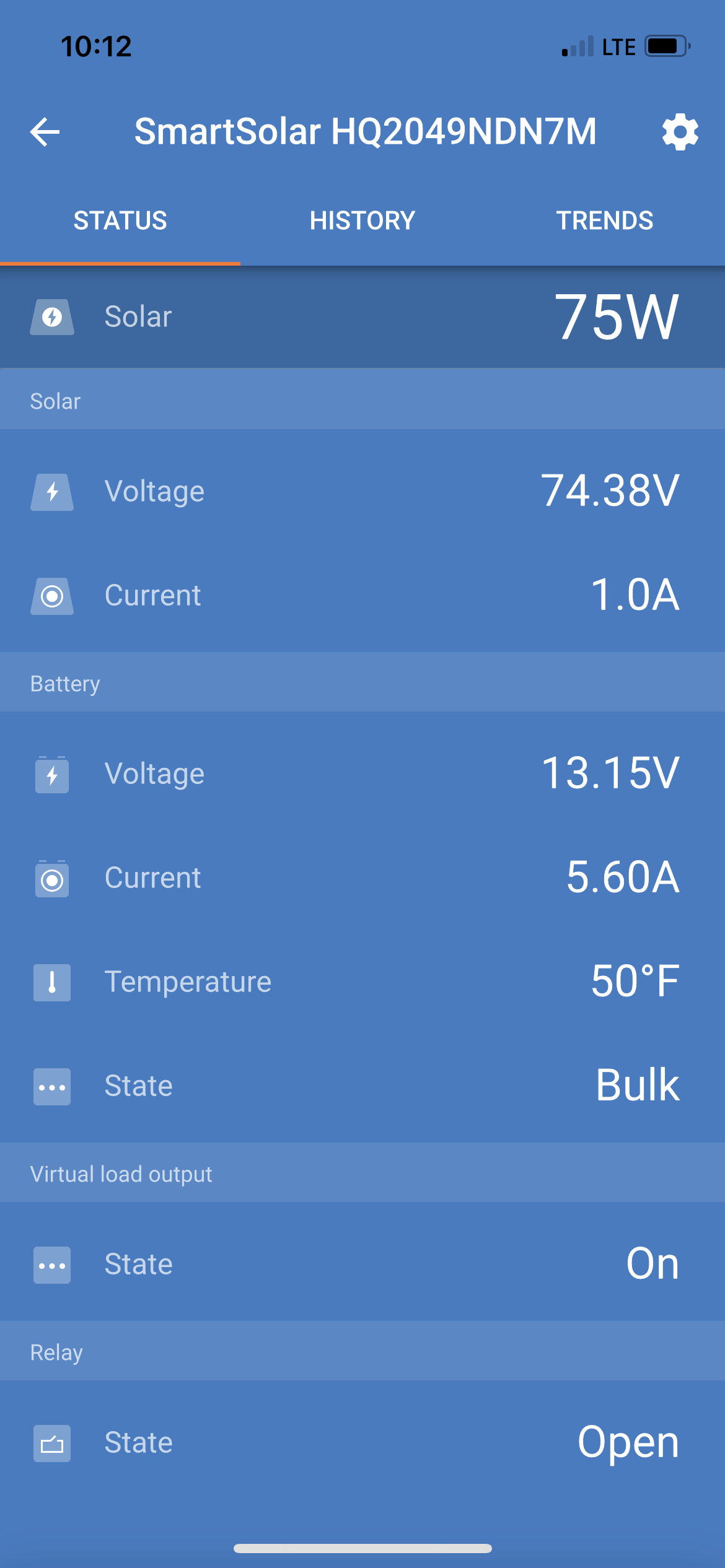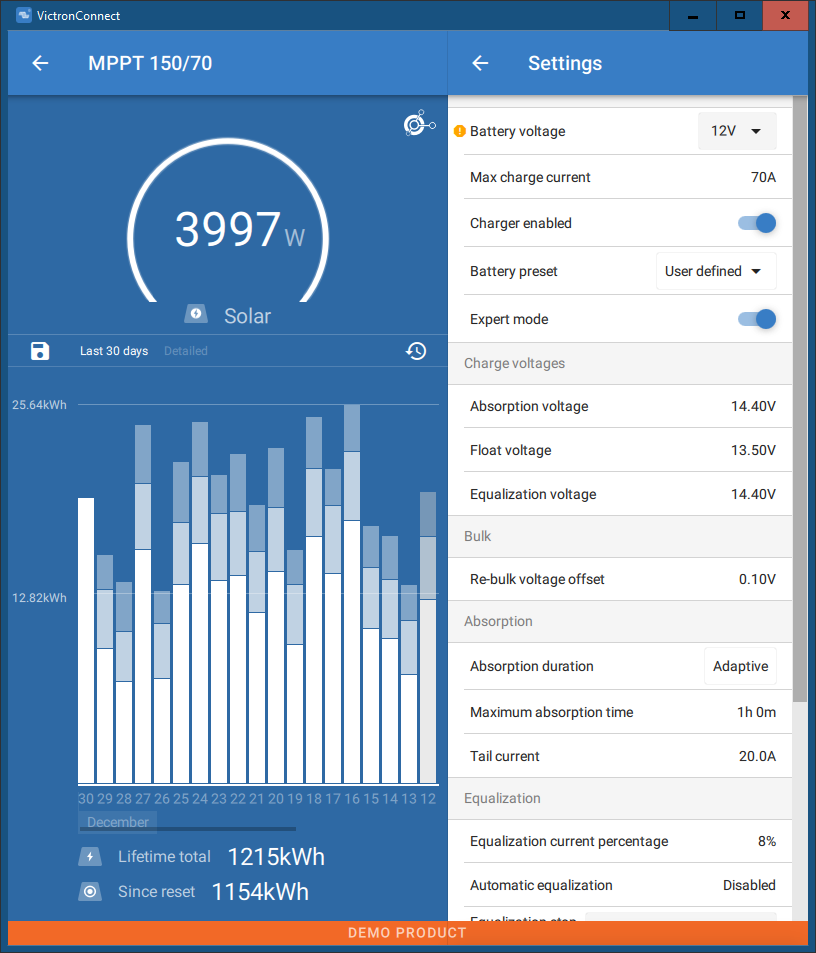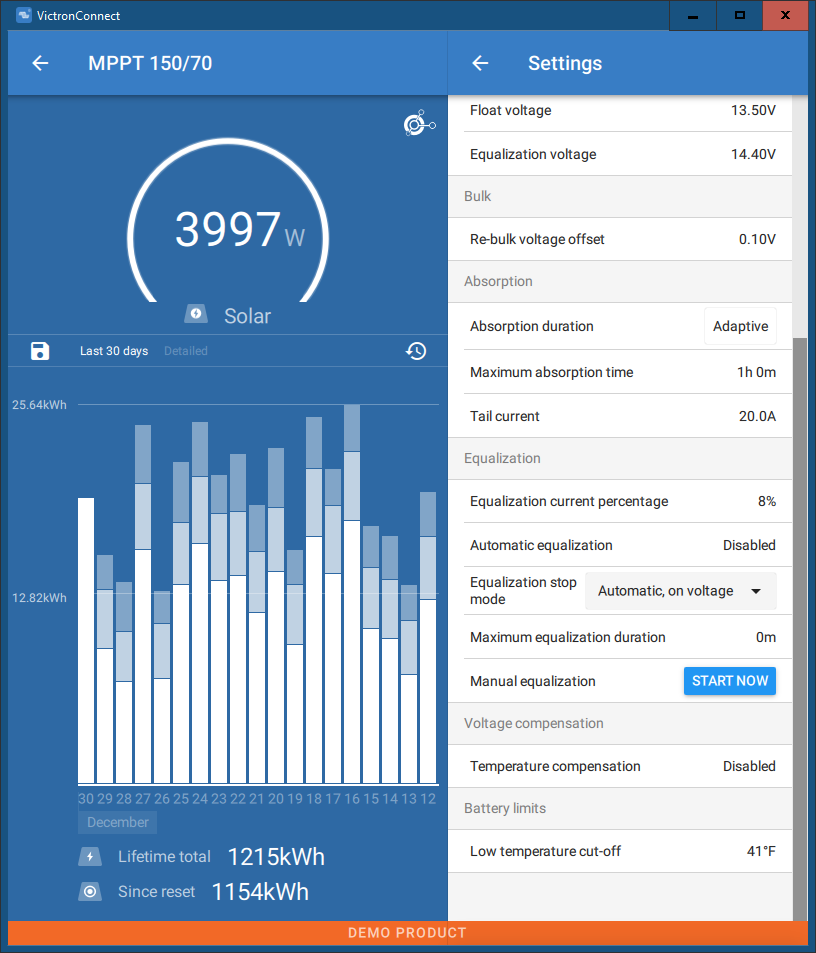Hello!
19 days ago my system started only bulk charging and only charging up to 13.56-13.59. It will not go into float or absorption. The only thing different I have done is updated the firmware when alerted to do so. The charge controller has had these symptoms once before and resetting the controller fixed the issue.
There are currently no significant energy draws on the system and I've had a full day of sun to test. My feeling is it's a faulty controller. Does anyone have any other recommendations on what could be going on??
Actions taken:
Reset charge controller on 3 occasions
Tested batteries - Good
Tested solar panels - Good
Disconnected battery sense - no change
Checked all fuses - no blown fuses
Reset charge controller to factory defaults - no change
System Details:
(2) 24 volt 320 watt solar panels wired in series
(4) 100 ah 12 volt batteries
150/70 Smart solar Victron MPPT
Victron energy smart battery sense